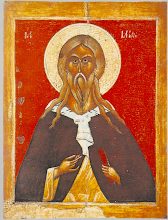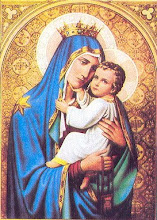Here is a biographical account of a phenomenal saint, including a prophecy he received from Our Lady: “Peter, fear not, the Order of Carmel will endure unto the end of the world; Elias has obtained this from my Son.”
To quote:
. . . . .He was appointed Bishop of Patti and Archbishop of
Candia. Charged by Innocent VI with no less than fourteen important
embassies, he was sent to the Court of Louis, King of Pouille, to the
Emperor Charles IV, and to John VI, Emperor of Constantinople. This
City he reconciled to the See of Rome. In 1356, he was sent as Legate
to the East and Examiner on questions of faith. In 1360 he anointed
Peter I of Lusignan, King of Cyprus and Jerusalem, and the following
year the pestilence attacked the Isle of Cyprus. The population were in
consternation at the horrors they witnessed; death everywhere and in a
horrible form. Peter multiplied himself, and his devotion during the
pest has become a tradition in the Order. He was everywhere and
everything; consoler, physician, father to the sick, to the dying, and
to those who wept and could not die, for death was easier than life amid
such scenes. His history would require a large volume, and through all
his embassies, missions and legations, we see the humble servant of Our
Lady, the Saint, moving obdurate hearts, inspiring heroic deeds,
advancing the interests of the Holy See, and shrinking from the honors
that were thrust upon him.
In the midst of the splendor of the times and with his rank as
Bishop and Legate, he lived simply like his Brethren; went on foot when
possible, lived in his own Monasteries whenever he could, though his
presence was claimed as an honor by Kings and Princes.
In 1365, he was made Legate and sent to preach the Crusade
against the Turks. He blessed the fleets of the Crusaders amid repeated
cries of “Live, Peter of Jerusalem!” “Live, the King of Cyprus against
the Saracens!” Thanks to his prudence and prayers, the army of the
infidels was routed, and the city of Alexandria taken October 4, 1365.
As was his wont, after the battle he went at once to the Carmelite
Monastery of Famagusta, to remain for the celebration of Christmas. He
had been wounded during the siege, by a Turkish arrow, and this was the
cause of his lingering death. (Read entire post.)





















No comments:
Post a Comment